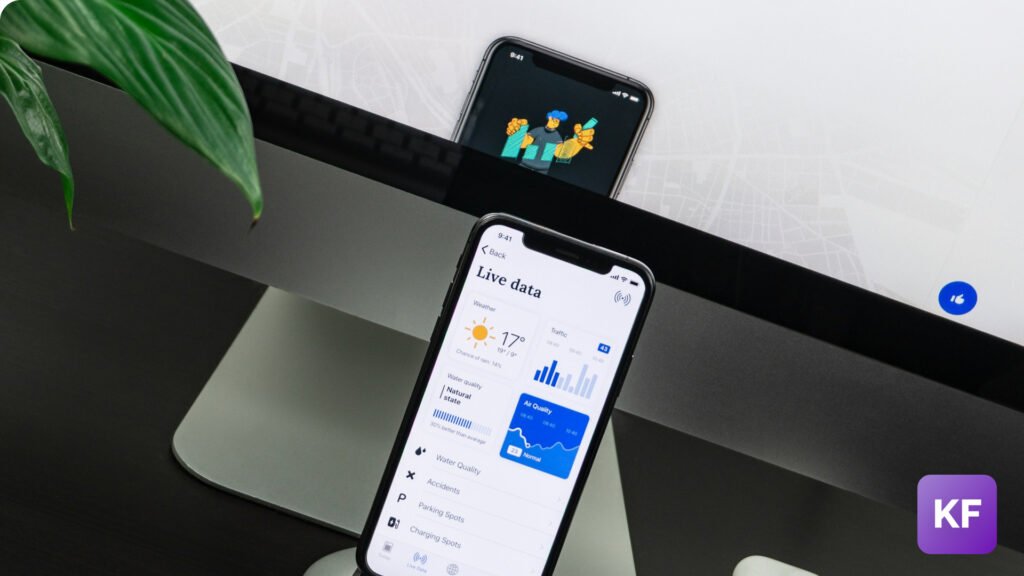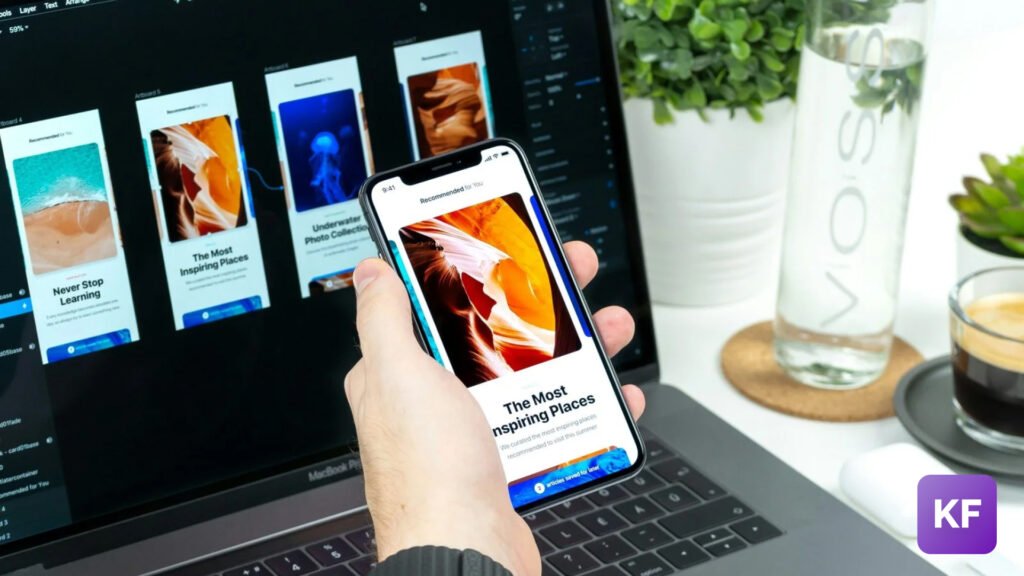
Introduction to UI Design Evolution
User Interface (UI) design has undergone significant transformations since its inception, evolving from rudimentary command-line interactions to today’s sophisticated, immersive interfaces. The journey of UI design can be traced back to the early days of computing in the 1960s, when users primarily relied on text-based command prompts. At that time, each user command required a meticulous understanding of the underlying system, which posed a barrier to broader user adoption.
The introduction of the graphical user interface (GUI) in the 1980s marked a pivotal moment in UI design history. Pioneered by companies like Apple with its Macintosh system and later by Microsoft with Windows, GUIs enabled users to interact with computers through visual indicators such as icons and windows. This innovation not only enhanced user engagement but also democratized access to technology by making it more intuitive. Users could now navigate systems with clicks and drags rather than memorizing complex command syntax, facilitating a wider demographic’s adoption of computers.
As technology advanced, so did UI design, leading to the emergence of more interactive and visually rich environments. The 2000s ushered in web-based applications and touch-screen interfaces, which further empowered users to connect with devices in more responsive and fluid ways. The proliferation of smartphones transformed UI design constraints, prompting developers to create mobile-friendly interfaces that prioritize accessibility and convenience.
Today, we stand on the brink of a new era in UI design marked by the rise of immersive environments. Technologies such as virtual reality (VR) and augmented reality (AR) are reshaping the way users experience digital content. This evolution reflects a continuous trajectory driven by technological advances and growing user expectations, aiming to create more meaningful interactions with increasingly complex digital ecosystems.
Understanding Immersive Interfaces
Immersive interfaces represent a significant evolution in user interface (UI) design, reshaping how users engage with digital content. At their core, immersive interfaces are environments that allow users to interact with virtual or augmented realities, creating experiences that are both engaging and intuitive. This can include technologies such as virtual reality (VR) and augmented reality (AR), each of which enhances user experience by enveloping users in interactive settings that traditional interfaces cannot replicate.
Virtual reality (VR) immerses users in a completely digital world, often through the use of headsets that block out the physical environment. This complete immersion allows for a unique user experience, where individuals can explore 3D spaces, interact with virtual objects, and engage with other users in a controlled environment. This kind of interface promotes a sense of presence, thereby increasing the intuitiveness of interactions and allowing for more natural user engagement.
On the other hand, augmented reality (AR) superimposes digital elements onto the physical world, enhancing how users perceive their surroundings. With devices such as smartphones or AR glasses, users can interact with both real and virtual elements simultaneously. This interaction facilitates a more engaging experience, making applications inherently more intuitive as they blend seamlessly into everyday life. Users find that AR can provide essential contextual information while maintaining their connection to the real world.
Overall, immersive interfaces harness the power of both VR and AR technologies to create environments that are not only visually captivating but also more user-friendly. By enhancing interactivity and engagement, these interfaces transform traditional applications into more intuitive experiences, paving the way for future advancements in UI design and redefining how we interact with digital content.
The Role of Intuition in UI Design
Intuitive design plays a crucial role in creating effective user experiences, as it directly influences how users interact with technology. When an interface is designed intuitively, it allows users to navigate various functionalities seamlessly, minimizing their cognitive load. Intuitive design fundamentally revolves around three key principles: predictability, learnability, and usability. Each of these principles contributes significantly to the overall effectiveness of user interfaces.
Predictability in UI design implies that users can forecast how the interface will behave based on their prior experiences. An intuitive interface provides consistent patterns, making it easier for users to anticipate outcomes from their actions. For instance, familiar icons and established navigation conventions enhance the predictability of an interface, leading to a more manageable and engaging user experience.
Learnability is another essential aspect of intuitive design. Users should be able to quickly grasp how to use an interface, with minimal instruction. An intuitive interface utilizes recognizable symbols and straightforward layouts to ensure that users can learn functionality rapidly. This ease of learning significantly contributes to a positive user experience, as it empowers users to accomplish tasks efficiently without extensive training.
Lastly, usability is a critical factor in intuitive design, emphasizing that users should find the interface convenient and effective for their needs. An interface that embodies usability is designed to minimize barriers that can hinder user interaction. When users can engage with an interface without encountering complications, they experience higher satisfaction and productivity levels.
In conclusion, the integration of intuitive design principles—predictability, learnability, and usability—into User Interface design is fundamental. By prioritizing these areas, designers can create interfaces that not only reduce cognitive load but also enable users to interact effortlessly with technology. The focus on intuition within UI design ultimately shapes a more streamlined and engaging user experience.
Current Trends in UI Design
In the rapidly evolving field of user interface (UI) design, several trends are significantly shaping the future landscape. Among these, dark mode has gained notable traction. This design choice not only offers aesthetic appeal but also enhances usability, particularly in low-light environments. It minimizes eye strain and conserves battery life on OLED screens, thus providing a more comfortable user experience. As a result, many applications and operating systems increasingly adopt this feature, promoting its relevance in contemporary UI design.
Another prominent trend is minimalism. This design philosophy champions simplicity by stripping away unnecessary elements, leading to a more focused and distraction-free interface. By utilizing ample white space and straightforward navigation, minimalism fosters clarity and enhances user engagement. A minimalistic UI design is particularly effective in guiding users through tasks without overwhelming them, making it a staple in modern applications.
Voice User Interfaces (VUIs) are also emerging as a transformative trend in UI design, fueled by advancements in natural language processing. VUIs allow users to interact with devices through voice commands, making technology more accessible, particularly for individuals with disabilities. This seamless interaction style enhances the user experience by allowing multitasking and providing an intuitive way to access information or control devices, thereby redefining how users engage with technology.
Lastly, the rise of gesture-based controls and motion design is notable in creating a more immersive interaction experience. Gestures allow for a more natural method of navigation, replacing traditional tapping and clicking with swipes and pinches. Coupled with motion design, which guides user attention and adds an element of interactivity, this trend elevates the overall experience, making interfaces not only more intuitive but also more enjoyable. These trends collectively represent a significant shift towards creating immersive and user-friendly interfaces in UI design.
User Experience Research and Feedback
User experience (UX) research plays a pivotal role in the modern landscape of UI design, as it effectively informs designers about the real needs and preferences of their target users. Gathering user feedback has become an integral part of the design process, enabling the creation of interfaces that are both immersive and intuitive. Various methodologies such as usability testing, A/B testing, and user interviews are commonly employed to collect this vital feedback, ultimately enhancing the overall user experience.
Usability testing is one of the primary methods used to evaluate how real users interact with a UI. This technique typically involves observing users as they navigate through the interface while completing specific tasks. By analyzing user behavior, designers can pinpoint areas of confusion or difficulty, thus informing targeted improvements. The insights gained from usability tests allow teams to create more user-centered designs that align closely with the expectations of their audience.
A/B testing is another effective approach to gathering user feedback in UI design. This method involves creating two or more variations of an interface and exposing them to different user groups simultaneously to determine which version performs better. By carefully analyzing user interactions, designers can uncover valuable data on user preferences, leading to informed decisions that significantly improve engagement and satisfaction.
Furthermore, user interviews serve as an invaluable source of qualitative feedback. Conducting structured or semi-structured interviews facilitates deeper conversations with users, allowing designers to explore their emotions, motivations, and specific needs related to the UI. These insights can lead to richer, more nuanced designs that resonate with users on a personal level.
Incorporating user feedback through these research methodologies is essential for developing UI designs that not only captivate users but also fulfill their functional needs. By prioritizing user experience research, designers can secure a competitive edge, fostering interfaces that are not only aesthetically pleasing but also intuitively usable.
Technological Innovations Affecting UI Design
The landscape of user interface (UI) design is being dramatically transformed by a series of cutting-edge technological innovations. Among these developments, artificial intelligence (AI) and machine learning rank prominently, enabling more adaptive and personalized experiences for users. By analyzing user behavior and preferences, AI algorithms can customize interfaces in real-time, allowing users to interact in ways that are more aligned with their expectations and habits. This adaptability is increasingly essential as user demands evolve and the variety of devices continues to expand.
Another pivotal innovation is biometric authentication, which enhances security while streamlining the user experience. This technology allows for natural interaction methods, such as fingerprint recognition or facial scanning, to replace traditional login processes like passwords. As more applications integrate biometric systems, users benefit from not only improved security but also expedited access to services, thus resulting in an intuitive interface that prioritizes efficiency.
The integration of the Internet of Things (IoT) is further reshaping UI design. As various devices connect and communicate, UI designers are tasked with creating cohesive interfaces that operate seamlessly across platforms. The challenge lies in ensuring that the user experience remains intuitive despite the increasing complexity of interconnected devices. By harnessing IoT capabilities, designers can foster environments where interactions are fluid and contextually aware, ultimately enriching the user’s journey.
In essence, the intersection of these innovations—AI, biometric solutions, and IoT—signals a pivotal shift in UI design, producing interfaces that prioritize personalization, security, and interconnectivity. As these technologies continue to advance, they will undoubtedly lay the groundwork for future UI design trends, offering users more immersive and engaging experiences across a variety of applications.
Challenges Facing Future UI Designers
As the field of UI design progresses towards more immersive and intuitive interfaces, designers will inevitably face numerous challenges. One of the foremost issues pertains to accessibility concerns. Designing interfaces that are both innovative and usable for individuals with differing abilities is a pressing challenge. As new techniques and technologies emerge, designers must ensure that these advancements do not come at the cost of accessibility. It is essential to integrate universal design principles from the early stages of the design process to create interfaces that cater to all users.
Another significant challenge involves the complexity of new technologies. As designers incorporate advanced tools, such as artificial intelligence, augmented reality, and virtual reality, they will encounter increased intricacies in creating user-friendly experiences. The rapid pace of technological advancement often leads to a lag in user familiarity with these tools. Therefore, designers need to not only focus on the aesthetic aspects of their work but also prioritize education and clarity to assist users in adapting to these emerging interfaces.
Moreover, the need for continual adaptation to changing user expectations is another hurdle that UI designers must navigate. User preferences evolve over time, influenced by trends, cultural shifts, and advancements in technology. Therefore, staying ahead of the curve requires ongoing research and user feedback integration throughout the design lifecycle. To effectively tackle these challenges, UI designers can adopt agile methodologies allowing for iterative testing and refining based on real-world usage and user input. Collaborating with cross-functional teams can also promote diverse perspectives, leading to more robust design solutions.
In navigating these challenges, UI designers must embrace a mindset of adaptability and prioritize inclusive design practices to create future-ready interfaces that resonate with users.
The Role of Ethics in UI Design
As the landscape of user interface (UI) design continues to evolve, the ethical considerations embedded in this field become increasingly significant. Designers wield the power to influence user behavior and experience through the choices they make in interface design. Consequently, ethical responsibility emerges as a cornerstone of effective UI design, impacting areas such as user privacy, data security, and honesty. This calls upon designers to approach their work with a commitment to moral integrity and social responsibility.
User privacy is one of the foremost ethical concerns in UI design. Designers must ensure that personal data is handled with the utmost care, providing clear information to users regarding how their data will be utilized. Transparency is essential in building trust, as users are more inclined to engage with interfaces that respect their privacy. Offering choices around data sharing enhances user empowerment while fostering a sense of security, which is vital in contemporary digital environments.
Moreover, data security is paramount in a time where breaches and data misuse are rampant. UI designers ought to consider the implementation of secure features, such as two-factor authentication and secure data storage options. By prioritizing security, designers not only protect user information but also establish a baseline of trustworthiness that users expect from modern applications and websites.
Another crucial aspect of ethical UI design is honesty in user interactions. Designers should avoid manipulative patterns, often referred to as dark patterns, that mislead users into actions against their best interests. Prioritizing user consent and providing straightforward navigation reinforces the integrity of the design, ensuring that users feel respected and valued.
In summary, the role of ethics in UI design cannot be overstated. By integrating ethical considerations into their processes, designers can create immersive and intuitive interfaces that not only engage users but uphold principles of privacy, security, and honesty.
Envisioning the Future: Predictions for UI Design
The realm of user interface (UI) design is on the precipice of significant transformation, propelled by rapid technological advancements and evolving user expectations. As we venture into the future, several predictions emerge regarding the landscape of immersive and intuitive interfaces.
One of the most prominent trends is the integration of artificial intelligence (AI) in UI design. AI has the potential to revolutionize how users interact with digital products by enabling interfaces to learn from user behavior and preferences. With machine learning algorithms, interfaces can provide tailored experiences, adapting in real-time to meet individual needs. This shift towards deeper personalization will likely create more engaging and satisfying interactions, as AI-driven systems understand user context and improve functionality over time.
Furthermore, the blending of physical and digital experiences will become increasingly prevalent. Augmented reality (AR) and virtual reality (VR) technologies are already paving the way for immersive interfaces that break the traditional boundaries of screen-based interactions. As these technologies improve, we can expect to see more seamless integration of real-world elements into our digital experiences. This fusion promises to enhance user engagement, allowing individuals to interact with digital content as if it were a tangible part of their environment.
Additionally, the push for accessibility in UI design will continue to gain momentum. Designers are becoming increasingly aware of the need to create inclusive environments for users with diverse abilities. Future interfaces are expected to feature more adaptive and assistive technologies, ensuring that all users, regardless of their challenges, can access and enjoy digital products fully.
Lastly, the rise of voice user interfaces (VUIs) will likely reshape how users interact with technology. As voice recognition technology improves, users may prefer auditory commands over traditional touch-based interactions. This evolution could lead to more intuitive interfaces that focus on natural language processing and conversation-like interactions.
As we look ahead, it is clear that the future of UI design will be shaped by these dynamic influences, encouraging designers and technologists alike to adapt and innovate continually.
Ready to Embrace the Future of UI Design? Partner with Knownfreaks.
At Knownfreaks, we’re passionate about creating immersive and intuitive interfaces that drive results. We understand the complexities of evolving UI design and leverage cutting-edge technologies like AI, AR/VR, and voice UI to deliver exceptional user experiences. Our team prioritizes accessibility and user-centered design, ensuring your digital products are future-ready. Contact us today to learn how we can help you navigate the future of UI design and create experiences that truly resonate with your audience.




